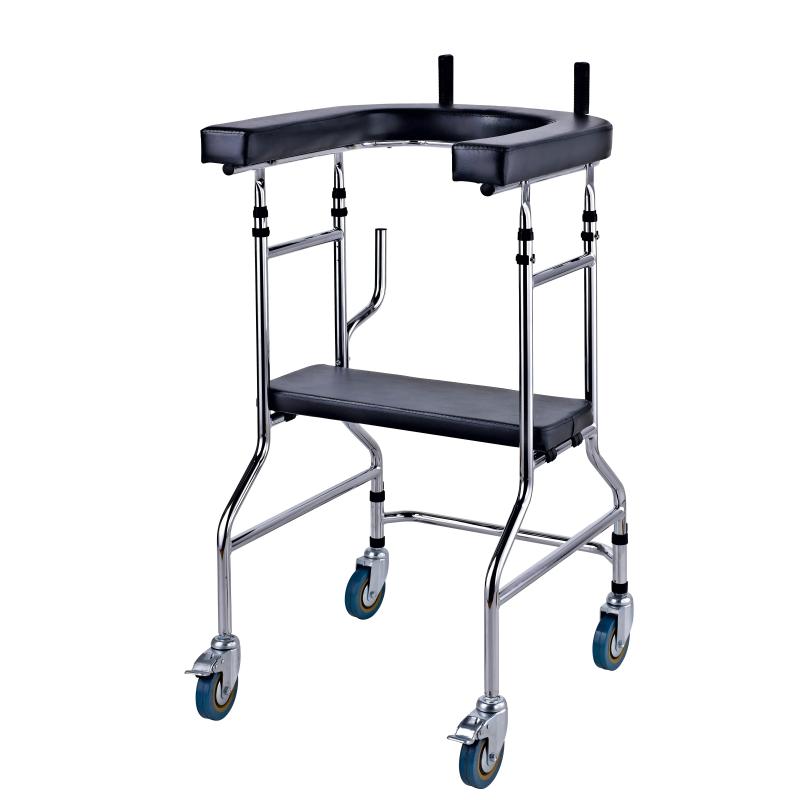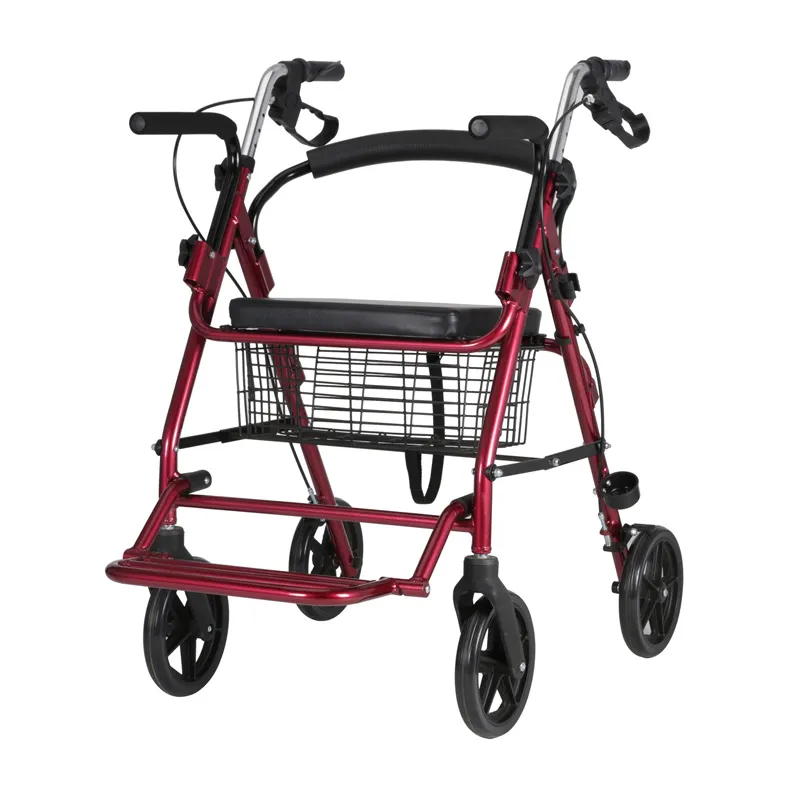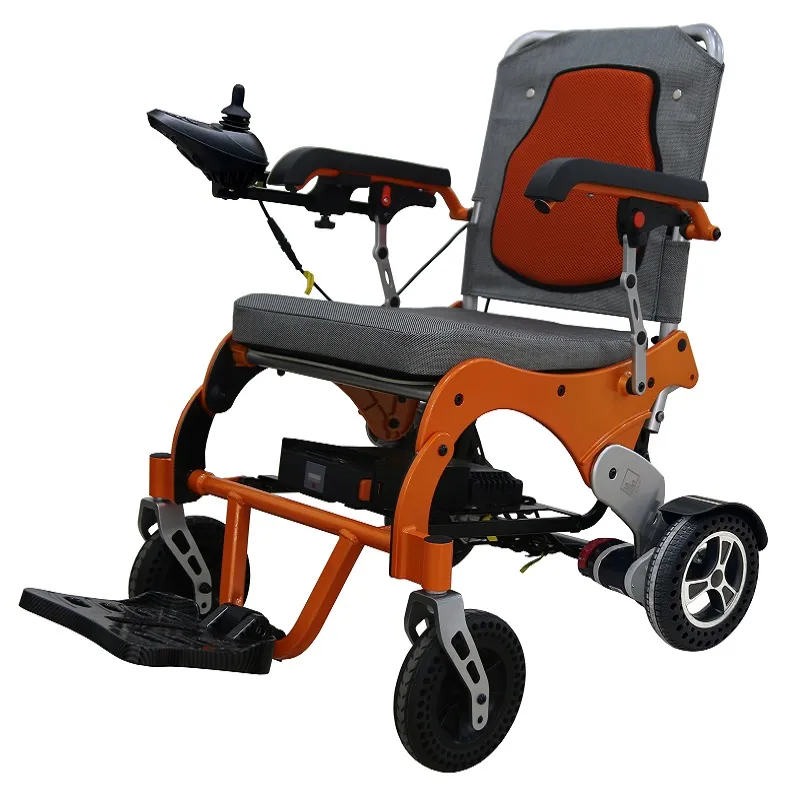Walking frames are a widely used mobility aid and are increasingly being adopted by people with limited mobility. They provide stable support and help users recover or improve their walking ability. However, they are not suitable for everyone.
Incorrect or inappropriate use of a Zimmer frame walker not only fails to improve mobility but can increase the risk of falls, increase physical strain, and even lead to secondary injuries. Therefore, clarifying who should not use a Zimmer frame walker and the reasons behind it is crucial to ensure user safety and effectiveness.
This article will provide a professional and detailed answer to this question from a medical perspective, functional assessment, ergonomics, and the usage environment.

wheelless walking frame

Wheeled walking frame
What is a Walking Frame? - Scope of Application
A walking frame is a walking aid that provides multi-point support and comes in various types, including four-legged walking frames, wheeled walking frames, and folding walking frames. By expanding the body's base of support, walking frames reduce the user's balance burden and improve walking stability. They are suitable for patients with lower limb strength deficiency, balance disorders, joint pain, neuromuscular diseases, and postoperative rehabilitation.
Walking frames are suitable for the following groups:
• Middle-aged and elderly individuals with frail health
• Post-stroke patients
• People recovering from fracture surgery
• People with neurological conditions (such as Parkinson's disease and multiple sclerosis)
• People with slow movements or an unsteady gait
However, walking frames are not a panacea, and improper use can have serious consequences.
Who Should Not Use a Walking Frame?
People Who Should Not Use a Walking Frame:
1. Those with extreme physical and upper limb strength impairments
2. Those with severe balance impairments
3. Those with limited range of motion and who require long strides
4. Those with severe joint deformities or osteoporosis
5. Those with cognitive impairment or mental illness
1. Those with extreme physical and upper limb strength impairments
Using a walking frame requires a certain level of upper limb strength and endurance. Users need to support their weight with their arms to propel the walking frame forward and maintain balance. If upper limb strength is insufficient and unable to effectively support weight, the walking frame can become a burden, increasing the risk of falls.
For example:
• Patients with severe myasthenia
• Quadriplegia or severe upper limb limitations
• Those in the early stages of recovery from a severe stroke or spinal cord injury
These individuals are more suitable for a power wheelchair or other powered assistive device.
2. Individuals with severe balance impairments
While a walking frame can enhance stability, it is not suitable for all balance impairments. Some individuals, due to severe vestibular impairment or brain damage, have extremely poor balance. A walking frame cannot fully guarantee safe walking and may even lead to falls due to improper use.
These individuals require professional rehabilitation training to improve their balance and, if necessary, consult a physical therapist for guidance on the use of other assistive devices.
3. Individuals with limited range of motion and who require long strides
The use of a Zimmer frame walker restricts stride length and is therefore suitable for slow, small-step walking. If the user requires long strides, such as walking quickly or navigating obstacles, the Zimmer frame walker may become a hindrance, leading to gait disturbances.
In particular, for those with severe lower limb joint diseases or amputations fitted with prosthetic limbs, improper use of the Zimmer frame walker may compromise rehabilitation outcomes.
4. People with severe joint deformities or osteoporosis
When using a walking frame, the user's body load is transferred to the upper limbs and joints. If the user already has severe shoulder, wrist, or finger joint problems, using a walking frame may aggravate pain and joint damage.
For those with severe osteoporosis, improper use of a walking frame may also increase the risk of fractures.
5. People with cognitive impairment or mental illness
Proper use of a walking frame requires the user to have certain cognitive and coordination abilities. People with cognitive impairment may not understand how to use it and may not be able to operate it correctly, increasing the risk of falls.
Some people with mental illnesses may also have difficulty safely using a walking frame due to emotional issues such as impulsivity and anxiety.

Why Are these People Not Suitable for Using a Walking Frame?
Some Reasons Why Walking Frames May Not be Suitable for Them Include:
1. Safety hazards caused by insufficient strength
2. Risk of falls caused by balance impairment
3. Limited stride length impairs functional recovery
4. Increased stress on other joints
5. Misuse caused by cognitive impairment
1. Safety hazards caused by insufficient strength
Zimmer frame walkers require upper limb strength. If the user cannot exert sufficient force to propel the walker, the walker itself may lose its stability. Furthermore, if used incorrectly, the user may fall due to forward weight loss or incorrect posture.
2. Risk of falls caused by balance impairment
Walking frames increase the number of points of contact with the ground, but this does not completely eliminate the risk of falls. Some people with severe balance impairments cannot effectively control changes in their center of gravity, making the walking frame unable to compensate for their severe imbalance and becoming a tripping hazard.
3. Limited stride length impairs functional recovery
An appropriate stride length and a natural gait are crucial for functional recovery. Zimmer frame walkers limit stride length and walking speed. For users who require a wider range of motion, using a Zimmer frame walker may lead to stiffness, hindering rehabilitation training and daily life.
4. Increased Load on Other Joints
Zimmer frame walkers place increased load on the arms and shoulders, which can easily lead to shoulder and wrist strain during use, especially for those with joint problems.
5. Misuse Due to Cognitive Impairment
People with cognitive impairment may have difficulty understanding the correct operation of a walking frame. They may push the walker incorrectly or use the crutch in the wrong direction, increasing the risk of accidents.

Can You Use a Zimmer Frame Walker? What Are the Assessment Criteria?
To ensure safe and effective use, a detailed assessment is required. The assessment for walking frame use includes:
• Upper limb strength test
• Balance test
• Cognitive screening
• Joint and bone health assessment
• Analysis of daily living abilities and walking needs
Only after a successful assessment can the suitability of a Zimmer frame walker and the specific model be determined.
What Are the User Requirements for Different Types of Walking Frames?
Different walking frame designs have different user ability requirements. For example:
• Wheelless walking frames: These require the most upper limb strength and are suitable for users with strong upper limbs and a need for maximum support.
• Wheeled walking frames: Their rolling design reduces the need for pushing and are suitable for users with less strength but good balance.
• Front-wheeled walking frames: They are more suitable for indoor use and offer greater flexibility.
When choosing a walking frame, the user should consider their actual abilities to avoid injuries caused by mismatched equipment.
What Are the Alternatives to a Zimmer Frame Walker?
For those who are not suitable for a Zimmer frame walker, the following assistive devices can be considered:
• Powered wheelchairs: Suitable for those with extremely poor upper limb strength or complete loss of balance.
• Walkers (with armrests): Some offer greater flexibility than Zimmer frame walkers and are suitable for those with certain balance impairments.
• Four-legged or single-legged crutches: Suitable for those with mild gait instability and greater muscle strength.
• Powered assistive devices, such as electric rollators, are suitable for those with severe physical limitations.
Safety Precautions for Proper Walking Frame Use
Even if a walking frame is suitable for use, users still need to pay attention to the following:
1. Receive training before use to ensure proper posture and pushing techniques.
2. Select the appropriate height and model to ensure comfort and safety.
3. Regularly maintain the Zimmer Frame Walker, inspecting wheels and foot pads for wear.
4. Maintain a flat, barrier-free environment.
5. Cooperate with rehabilitation therapy to improve physical function.

How Do You Ensure Quality Control for Your Walkers and Rollators?
Quality is integral: Each walker and rollator produced in our dual R&D and manufacturing bases undergoes thorough inspections at critical production stages. With ISO13485 and ISO9001 systems, plus FDA and TUV audits, and CE approval, we ensure robust design and safety.
We offer low-cost bulk orders, factory-direct pricing, and wholesale or customized models for global buyers—ideal for distributors, hospitals, or care homes seeking cost-effective mobility solutions with documented quality credentials.










